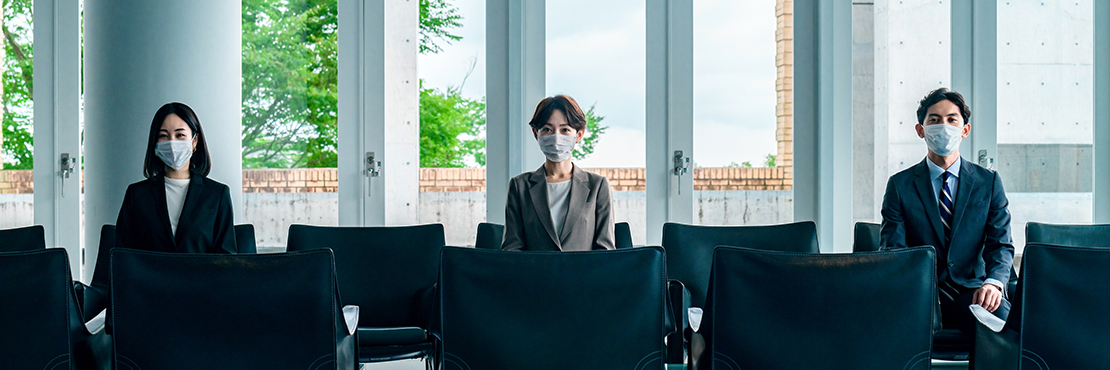
Due to the spread of the novel coronavirus infection, some places have found it difficult to hold meetings or events. However, even under these circumstances, one country has successfully held meetings and events. The country? Japan!
When there were lockdowns all over the world; Why was it possible to have meetings and events held since April 2020, in Tokyo, Japan’s capital? And what types of meetings and events were being held? Let’s find out!
Japan issued a "state of emergency" from April to May 2020, amid the world’s lockdowns. However, Japan's state of emergency was quite different from the so-called "city shutdown (lockdown)". It only encouraged people to refrain from going out and was not a legally binding order.
However, the government called for an "80% reduction in contact between people", and companies promoted to work remotely. The city center's terminal stations, which were usually crowded with people, became empty and quiet, as did the high traffic areas in office districts. The bus and taxi passengers disappeared. As a result, Japan succeeded in avoiding the outbreak of infections.
Japan is originally a country with strict hygiene measures; therefore, prevention such as hand washing, gargling, and masks have become a habit. As a result, there are fewer reported cases of COVID-19 in Japan. According to the Sapporo Medical University as of September 25, 2020, there were only about 80,000 cases in Japan compared with 7 million in the United States. You can see how low the number of infected people was in Japan.
Please click the link below to download details on the infection status of each country.
When the state of emergency was lifted in mid-May, Japan, which has avoided the outbreak of infections, gradually resumed its economic activities. Since June, meetings and events have been held after taking various measures against infections.

A large-scale social gathering with 100 participants was held in June, shortly after the state of emergency was lifted. While reducing the participants' contact as much as possible, we determined how to enjoy the meal through trial and error. The meal was set aside by gloved staff in advance, a non-conventional style of a standing buffet. While retaining the buffet style's real attraction, where you can choose your favorite dishes at your favorite time, we prevented droplet/contact infections.
A company’s entrance ceremony was held in early April; then, from April 7th to May 25th, 2020, the state of emergency was declared in Tokyo. Even at the venue in the example above, all the events scheduled for April and May were canceled. Immediately after the state of emergency was lifted, economic activity gradually resumed, and meeting events began again. Over 20 meetings and events took place between April and September.
You can see a list of the events held at our venues, and what we were doing to prevent infections, by clicking on the link at the end of this article. Please look at it.
In Japan, the “Omotenashi" spirit –the spirit of hospitality based on the desire that all who come to Japan spend their time safely and securely – is built into society. This spirit still prevails even in the COVID-19 crisis.
Various measures have been taken to prevent droplet/contact infection from preventing Covid-19 clusters' occurrence when holding an event. These measures include "thorough hand sanitization", "reducing the number of people per table", and "using acrylic plexiglass dividers to prevent droplet infection ".
Consider Tokyo, Japan, Japan’s capital, as a destination venue if you think of holding a meeting or event soon or in the future. It is a safe destination that is excellent in preventing infections from the novel coronavirus and is ready to hold your event at any time.
We look forward to welcoming you!
Please fill in the form below to download the measures to prevent infections for the novel coronavirus with photos taken at the meetings and events introduced in this column. This also covers the charm of “Tokyo”, the safe destination, and please look at it.
The link below introduces in detail the types and formats of meetings and events held in Tokyo, specific infection prevention measures, and Japan’s actual situation during the coronavirus crisis.
Please download for more details.